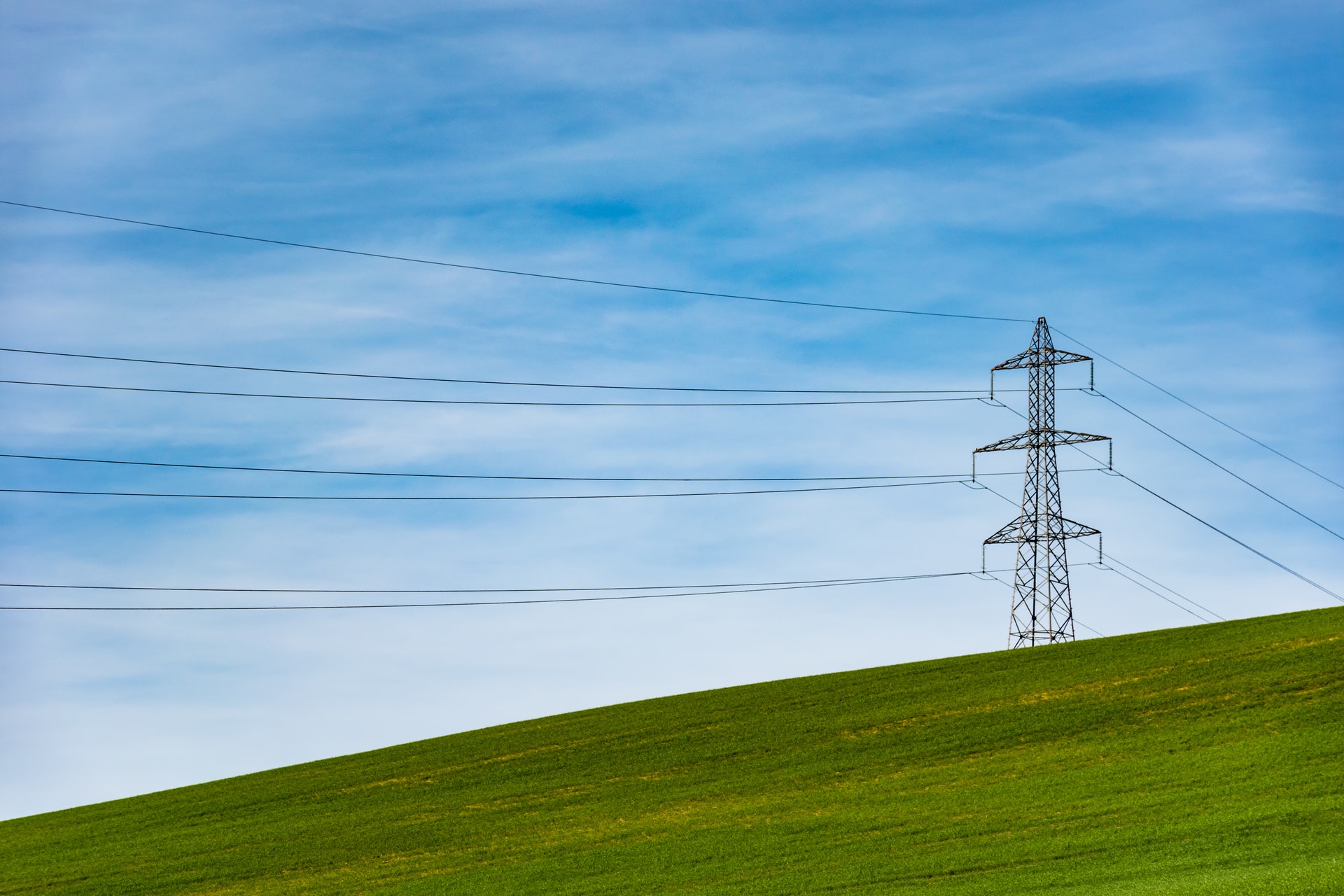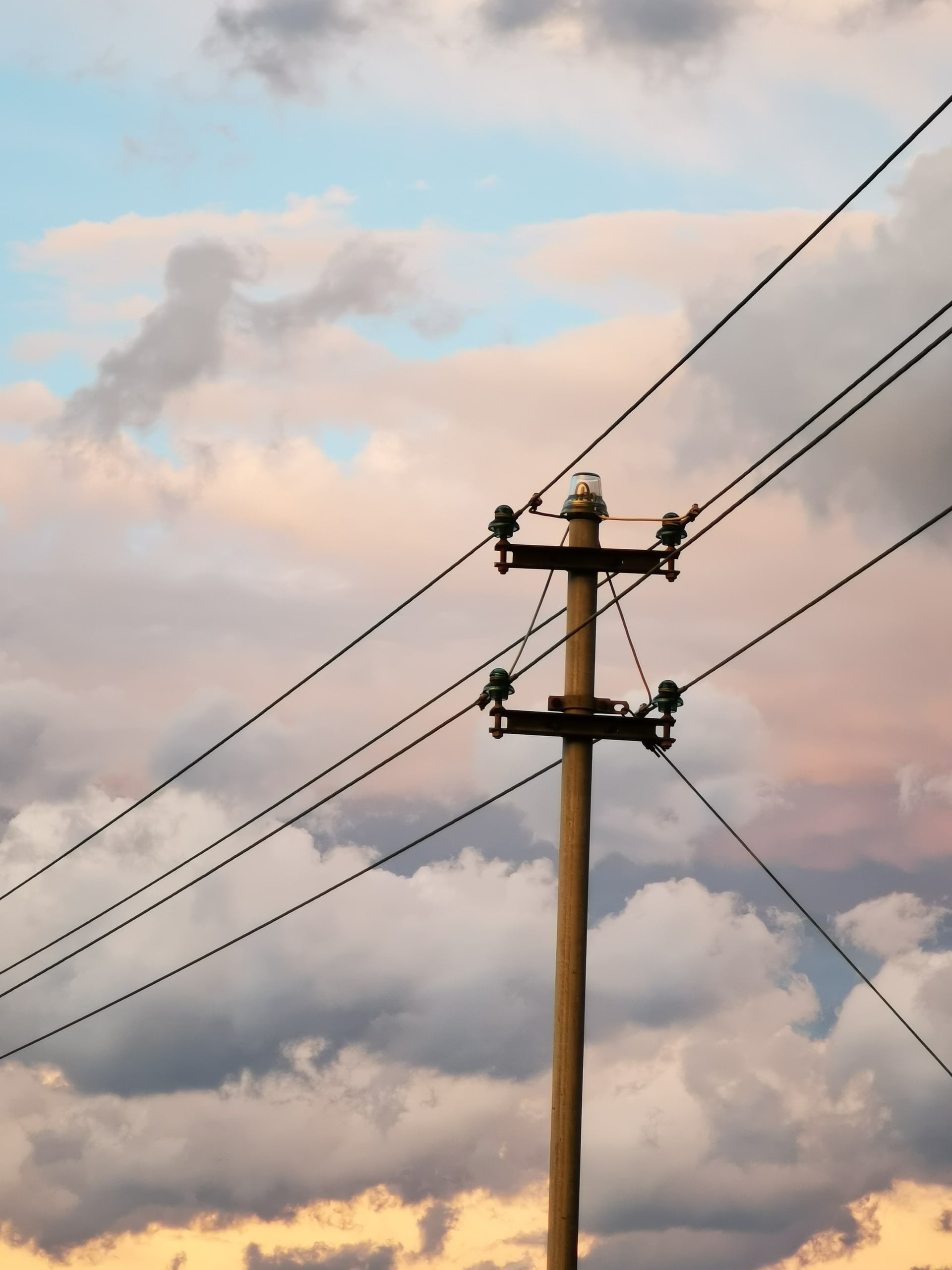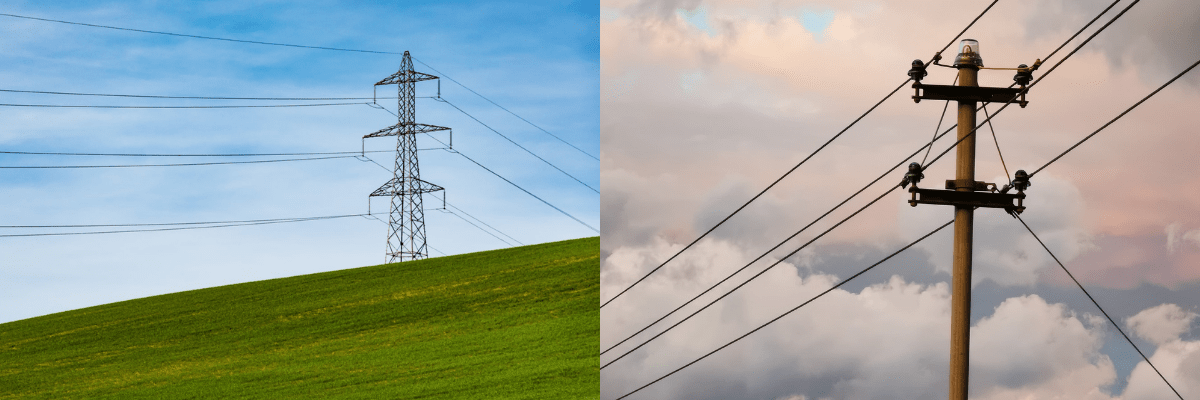Utility companies use two different types of power lines—transmission and distribution power lines—for the transportation of electricity. While transmission and distribution lines work together to carry and deliver electricity from power sources to consumers via the energy grid, they serve different functions and there are a number of key differences between transmission and distribution power lines.
What is the Difference Between Transmission and Distribution Power Lines?
The core difference between transmission and distribution power lines is that transmission power lines are for long-distance, high-voltage electricity transportation, whereas distribution power lines are for shorter distances and lower voltage electricity transportation. To illustrate, transmission lines are the power lines you might see on the side of the freeway, while distribution lines can be seen on the sides of streets.
Transmission Power Lines
Transmission power lines carry bulk electricity from the generating power station to a number of substations. Key functions and feature of transmission power lines include:
- Carry electricity over long distances (i.e. across the state).
- Transport bulk electricity at higher voltages, typically between 60 kV and 500 kV.
- Usually supported by tall metal towers.
- Bi-directional, allowing electricity to travel in both directions.
- Uses a three-phase supply system.
- Transmission lines are thicker compared to distribution lines.
- Have different vegetation requirements due to the high voltages involved:
- Only low-growing vegetation—typically nothing taller than 10 feet at maturity—is required.
- Carry electricity shorter distances (i.e. to neighborhoods and communities).
- Usually supported by wooden poles, at a lower height than the metal towers used for transmission lines.
- Traditionally mono-directional, made only to carry electricity in one direction.
- Uses a single-phase supply system.
- Distribution lines are thinner than transmission lines.
- Serve as the final stage in the delivery of electricity to homes and businesses.
- Although distribution lines carry lower voltage electricity, it is still powerful enough to cause injury, or even death.
- Generators produce electricity.
- Transmission lines then carry this electricity across and between states.
- Distribution lines deliver the electricity to consumers.
- Consumers purchase the energy for residential and commercial use.
- Retailers sell energy to consumers.

Distribution Power Lines
Distribution power lines carry electricity from the substations to the consumers, completing the electricity journey. Key functions and features of distribution power lines include:

Transmission & Distribution: Bringing Electricity From Generator to Consumer
Both transmission and distribution power lines serve separate purposes in bringing electricity from the source of generation to the end consumer in homes and businesses across the country. In order to reach residential, commercial, and industrial customers, electricity goes through transmission and distribution lines on its energy grid journey. As the electricity travels from one type of power line to another, it is passed through transformers, which modify the voltage in order to minimize energy loss. The transmission and distribution of energy via the grid can be broken down into the steps below:
Solar energy is one of many energy sources which provides electricity to the grid. To go solar, save money, and make a positive difference to the environment, reach out to YSG today. Call the office at 212.389.9215 or send us an email to learn more about solar power and find out just how much you could save on your electricity bills.
YSG Solar is a project development company responsible for commoditizing energy infrastructure projects. We work with long-term owners and operators to provide clean energy assets with stable, predictable cash flows. YSG's market focus is distributed generation and utility-scale projects located within North America.
Sources:
https://callmepower.com/faq/energy-markets/difference-between-transmission-distribution
https://circuitglobe.com/difference-between-transmission-and-distribution-line.html
Inline image courtesy of PJM Interconnection
Featured Photos by Thomas Despeyroux and Robin M. on Unsplash.

